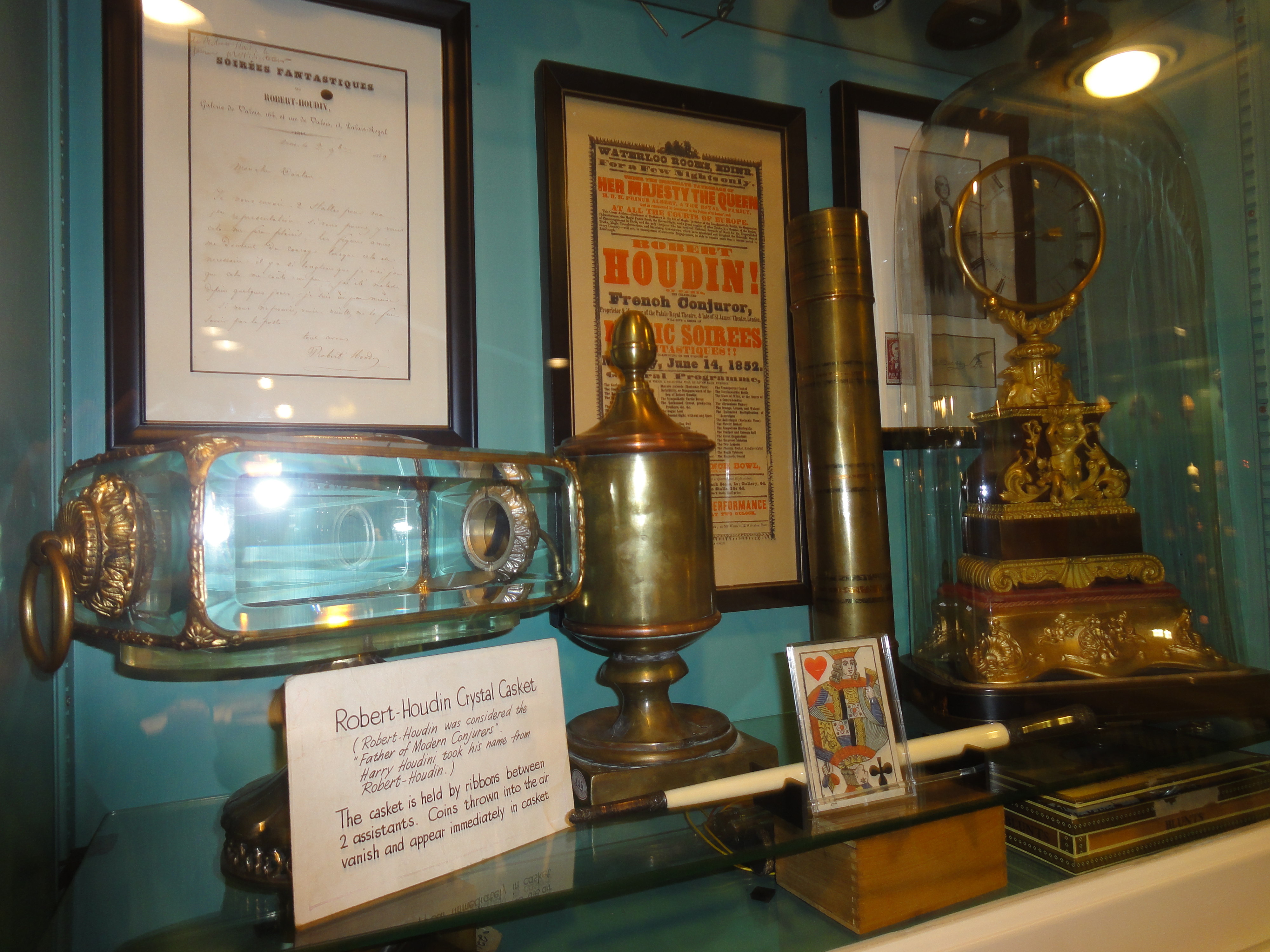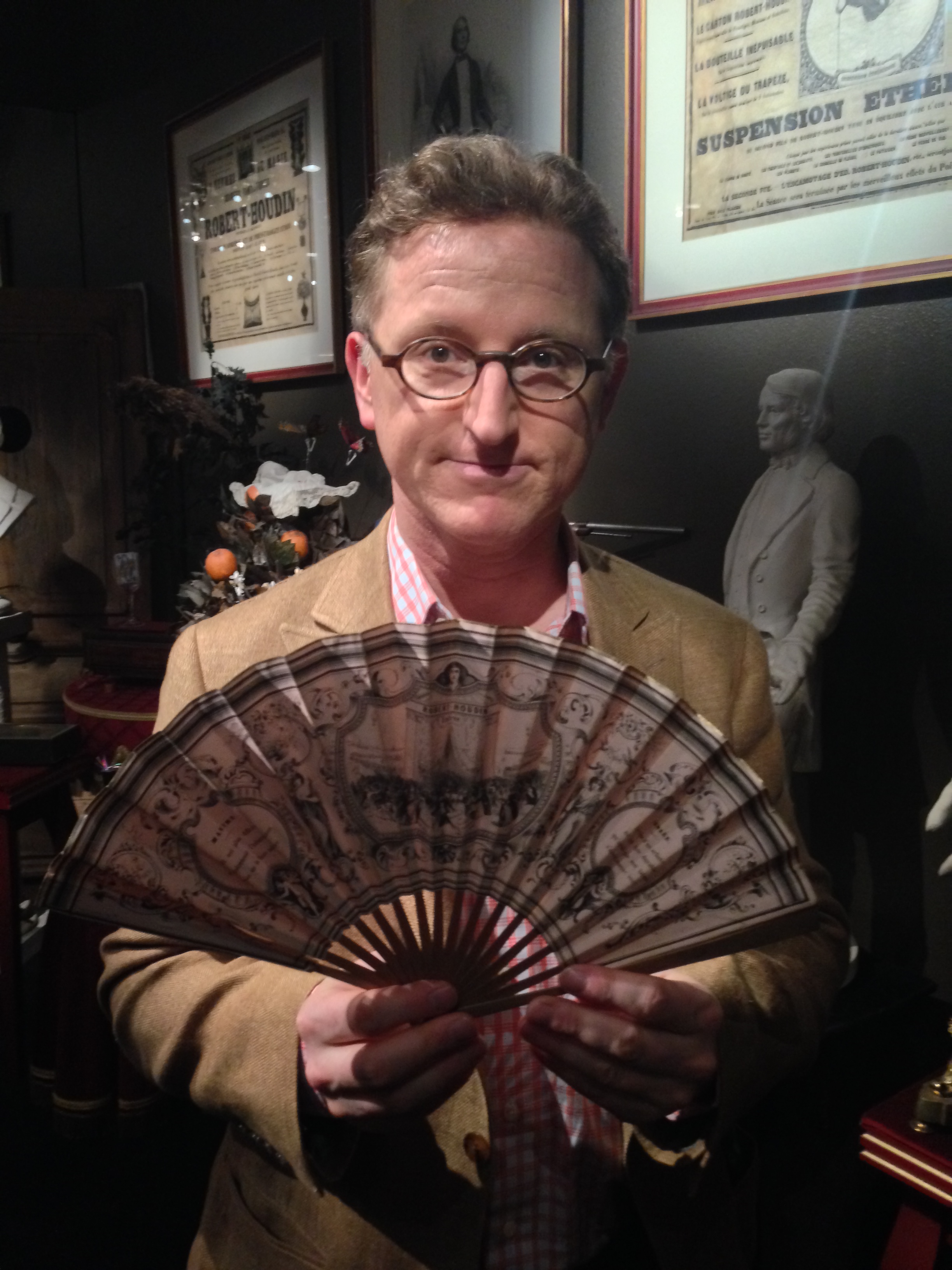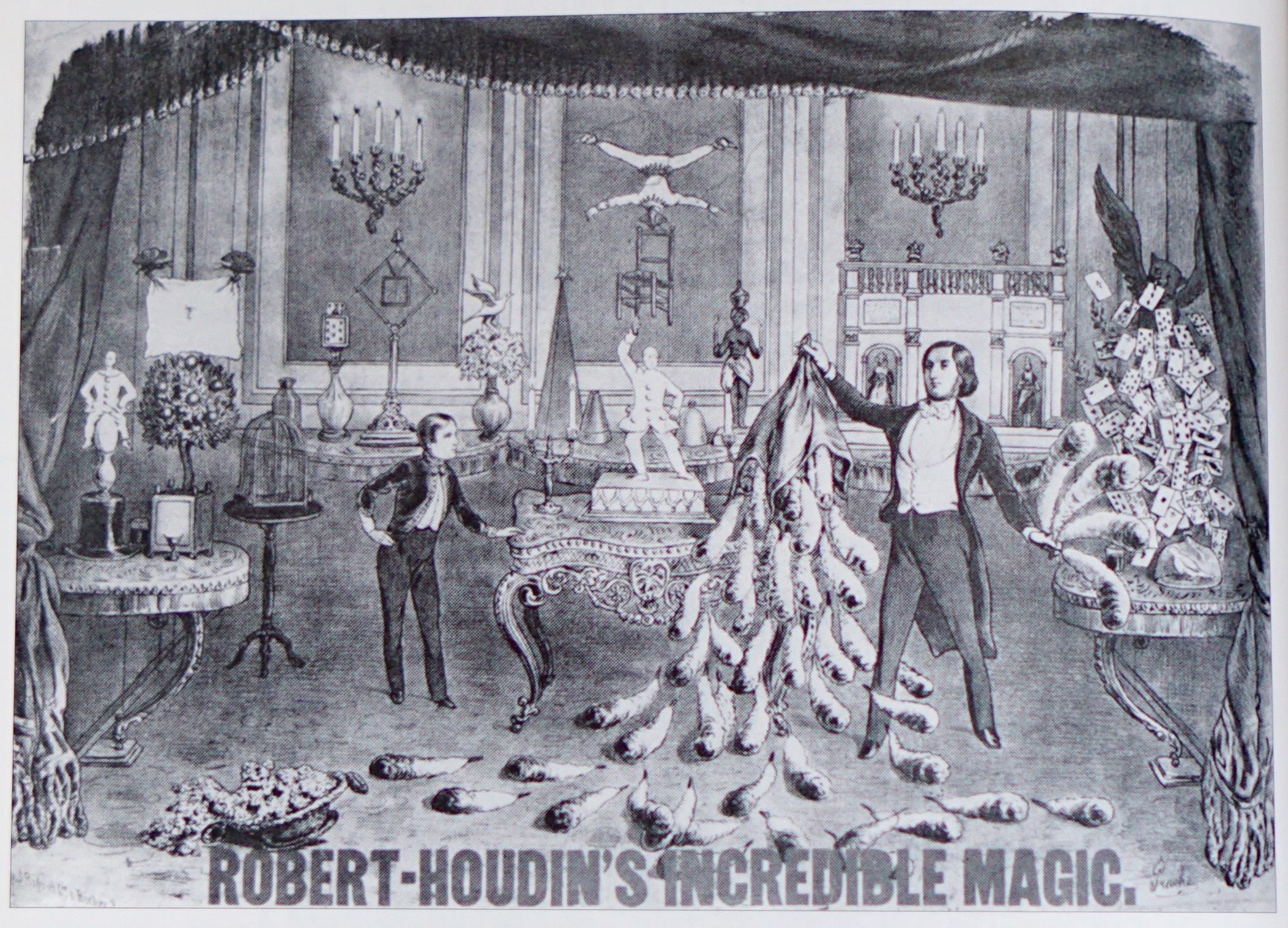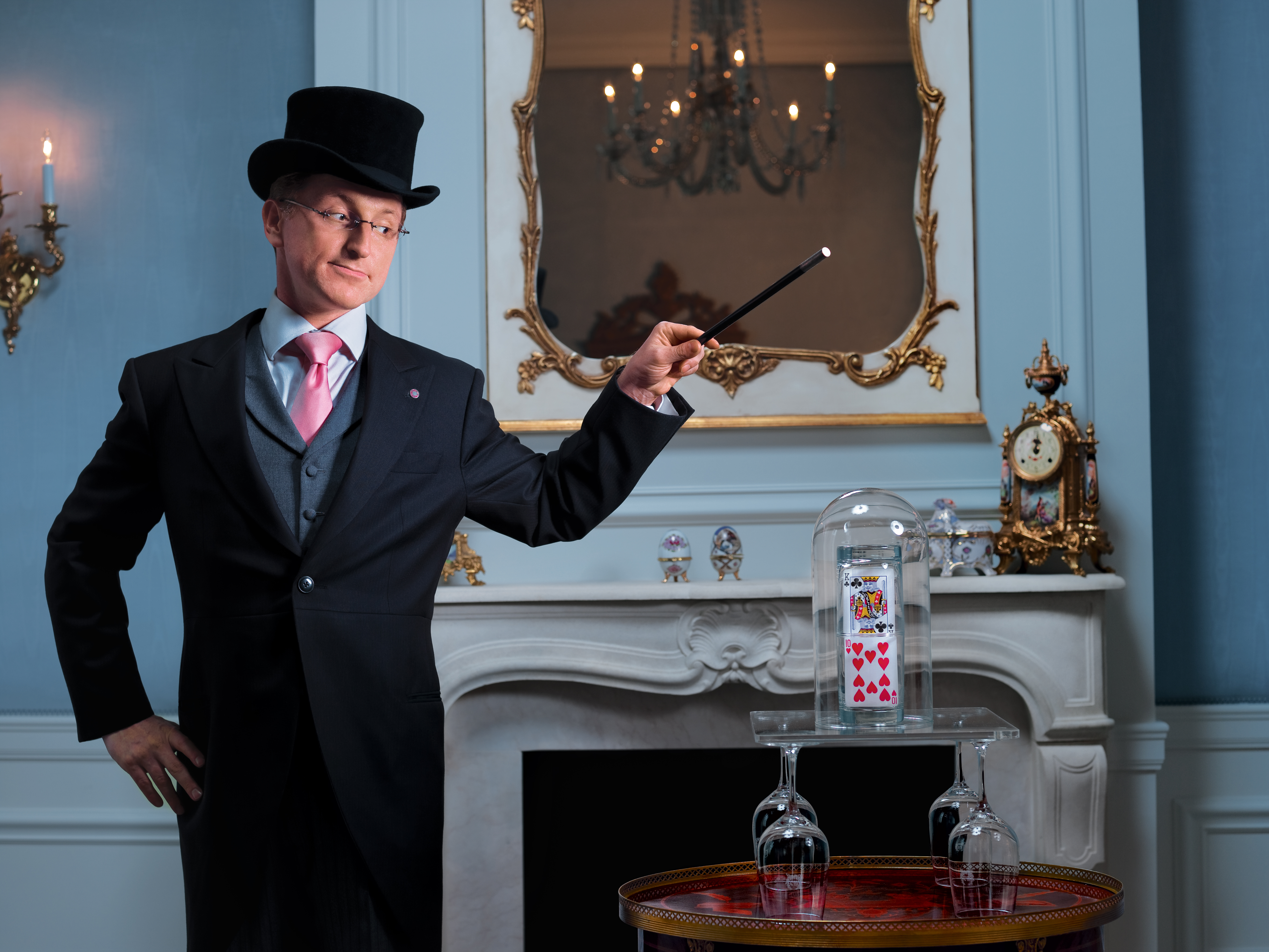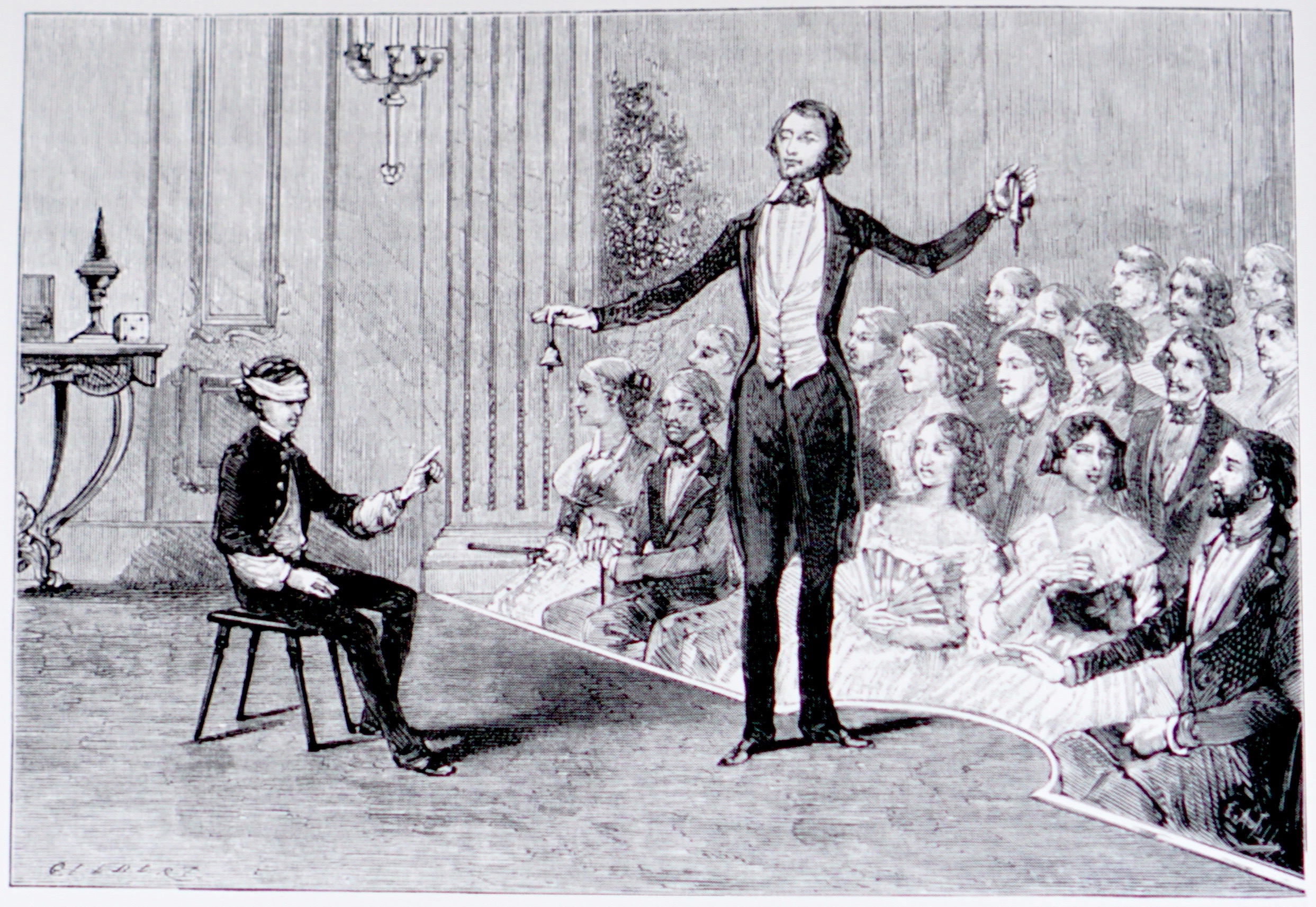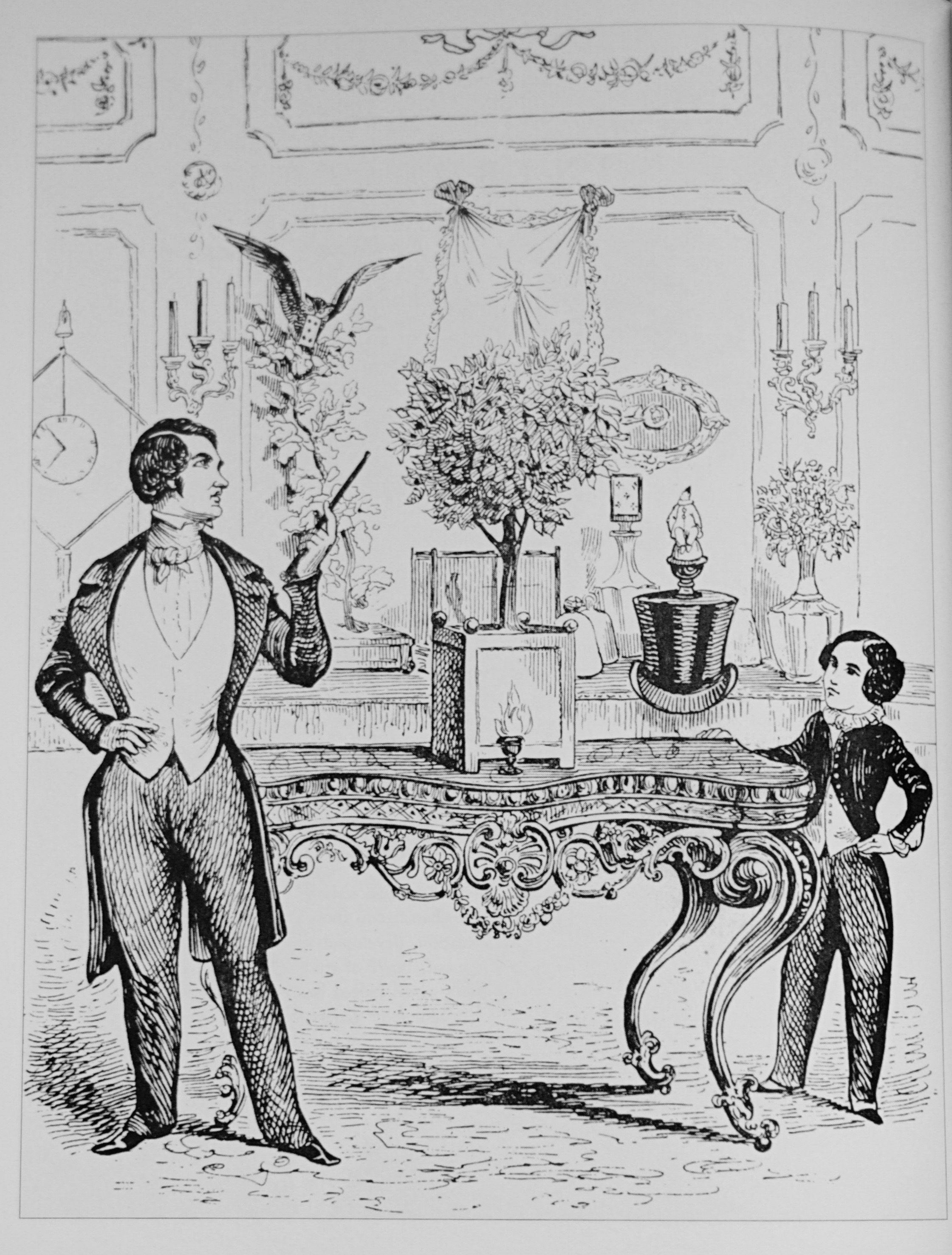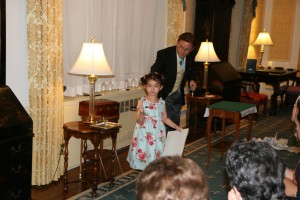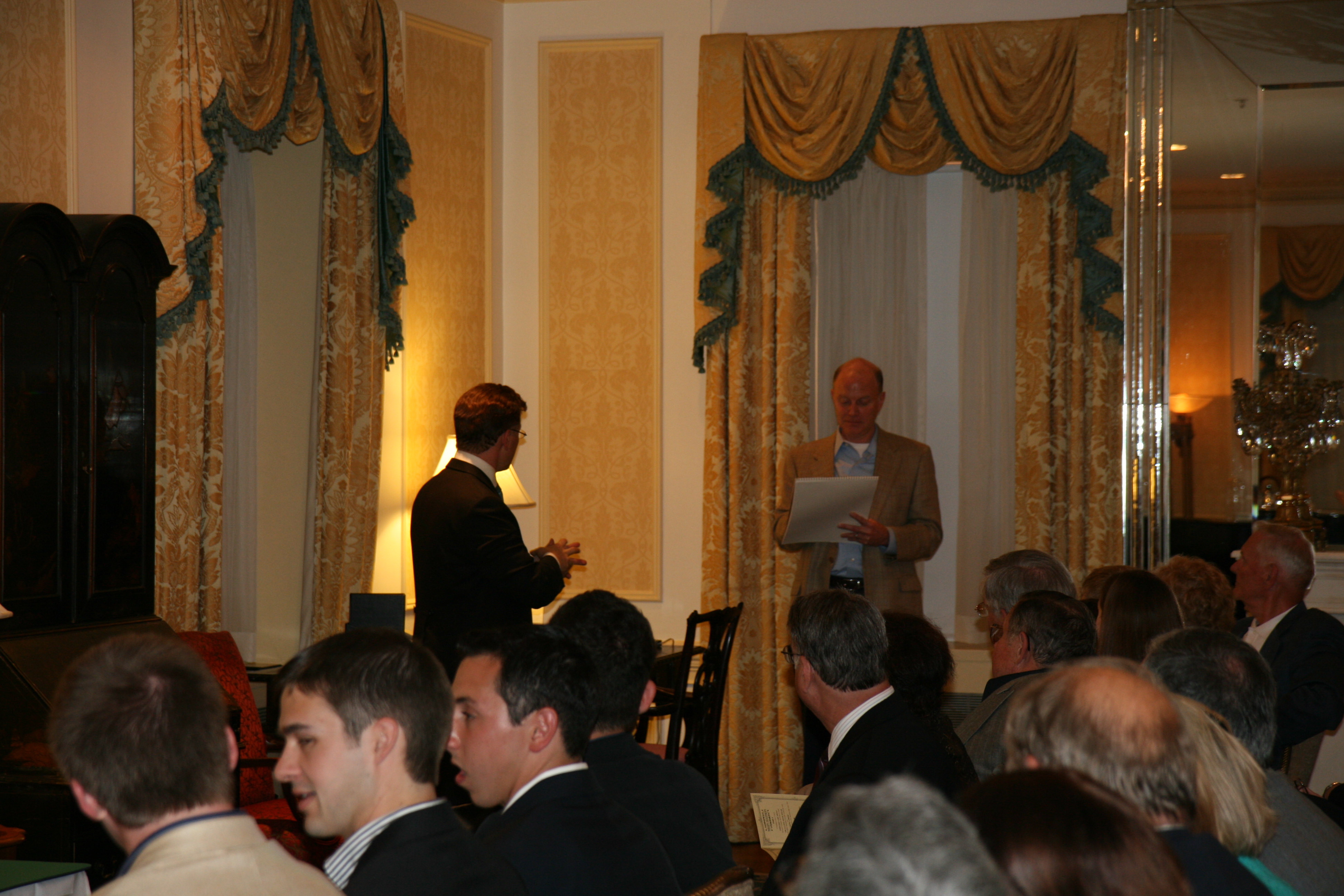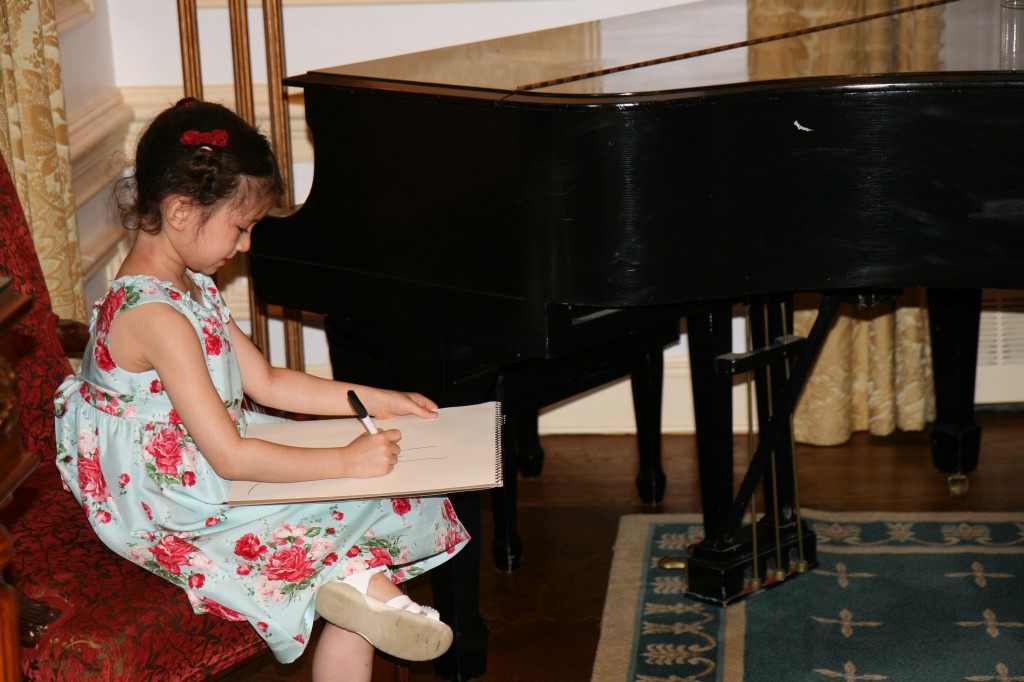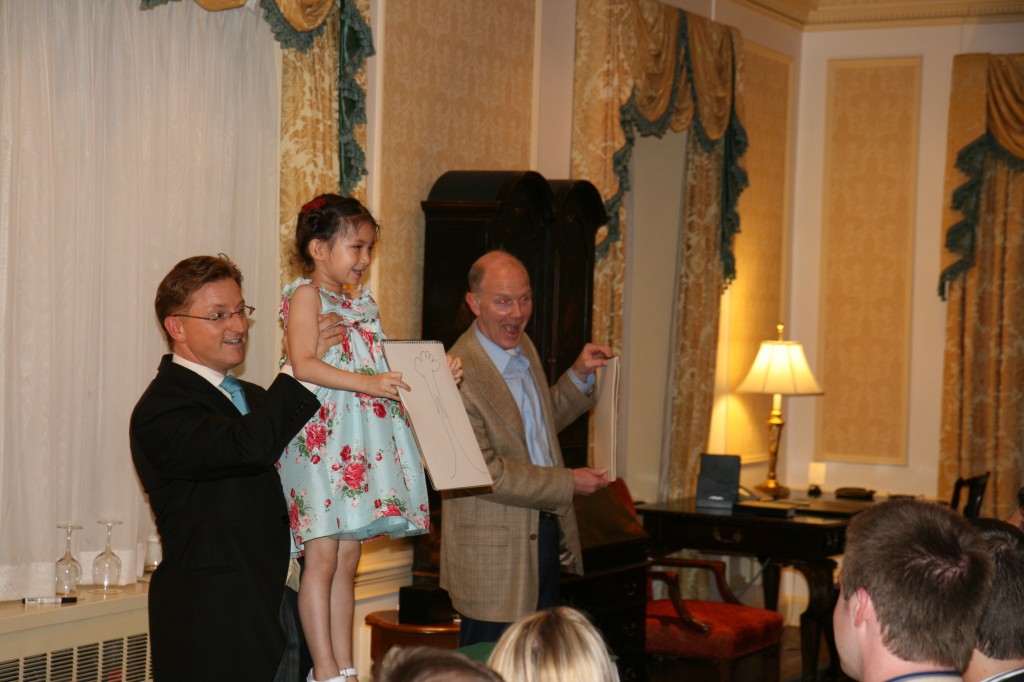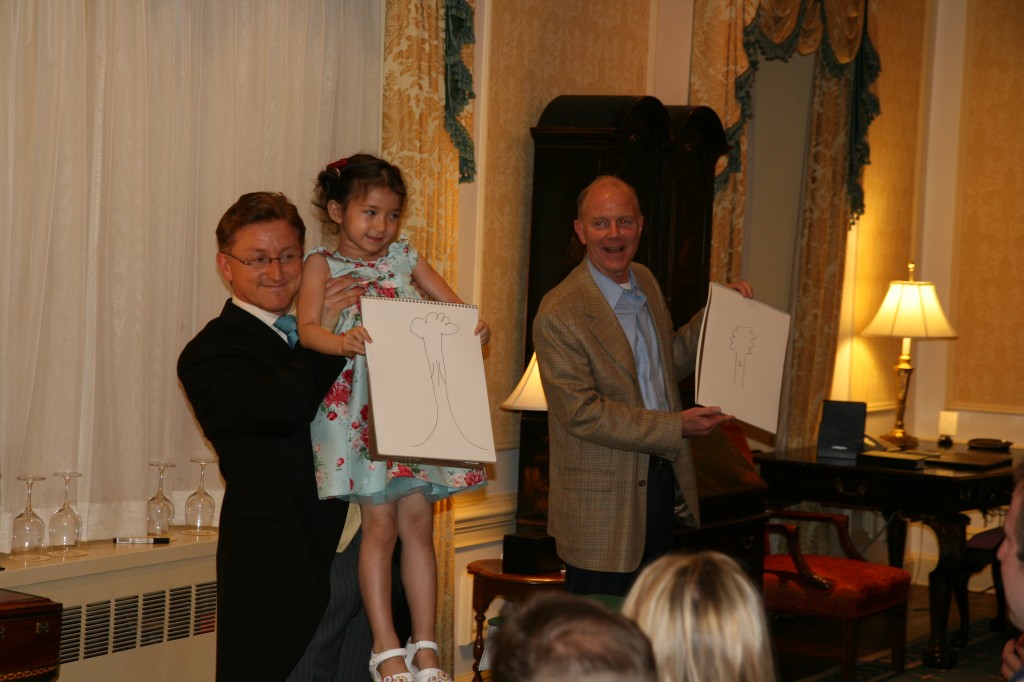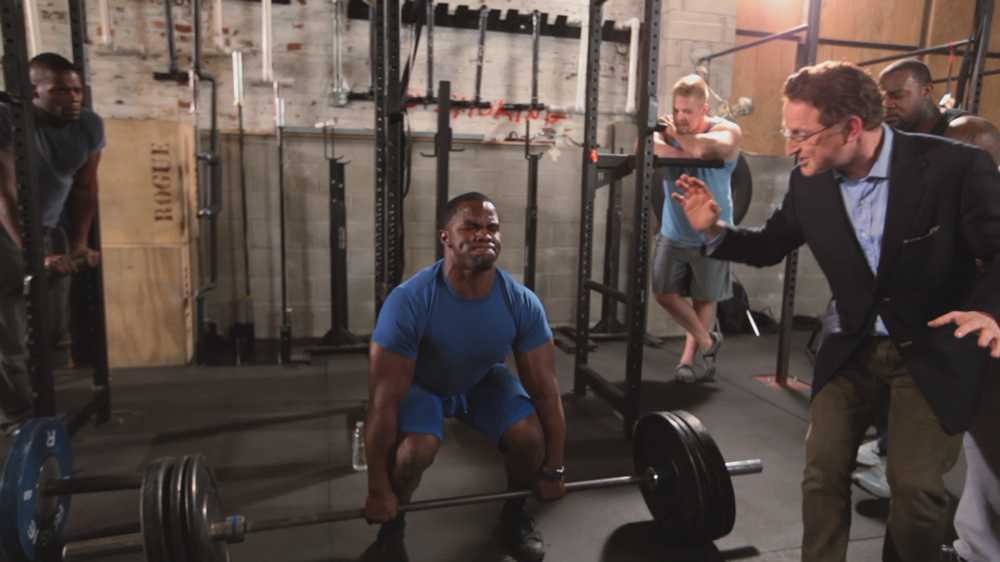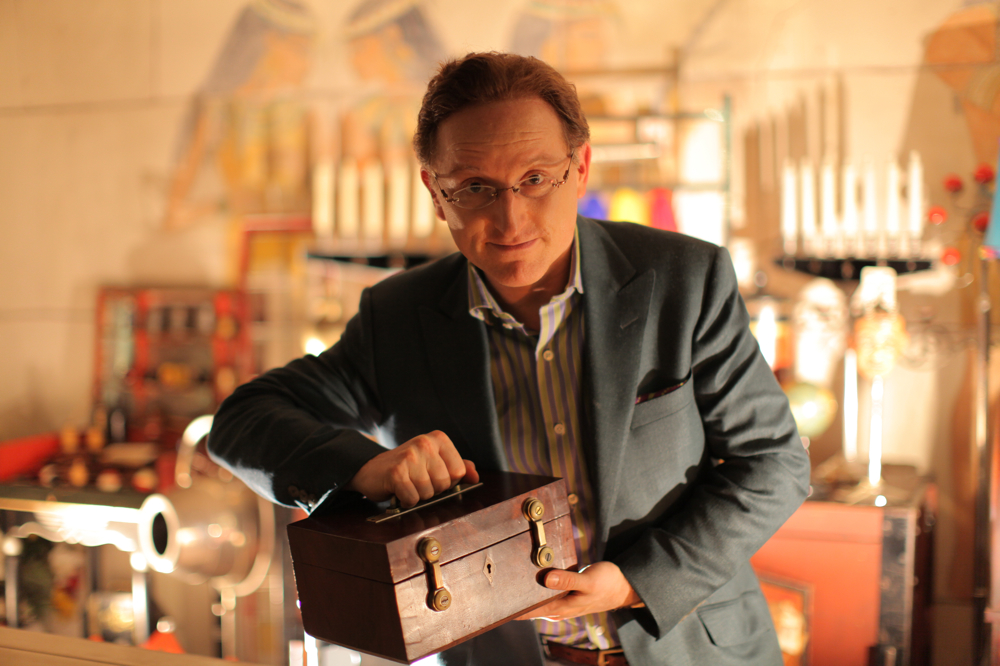MAGIC MENTOR MONDAY: Jean Eugene Robert-Houdin
November 2, 2015
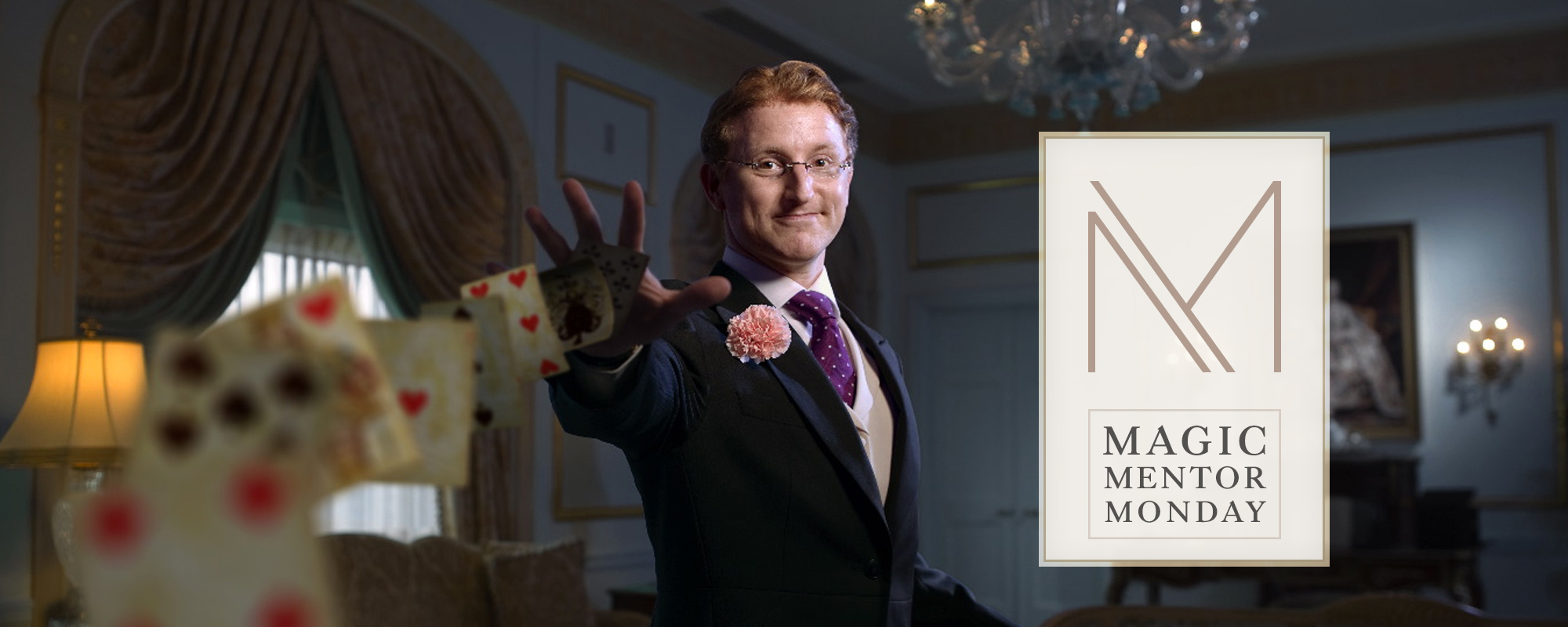
Welcome to MAGIC MENTOR MONDAY. In this weekly series, I introduce you to my magic mentors – people who have inspired me to become a better magician. Each Monday you’ll meet someone who has offered advice, or acted by example, to help steer my career.
Some of these people are alive, others no longer with us. Some are famous, others not so much. The beauty of mentorship is that you don’t necessarily have to meet your mentor face-to-face, nor even live during the same time in history. Many of the people who motivated me were alive a century before I was born! By reading classic books, old newspapers, and magazine articles, I’ve tracked down stories about their lives and work that continue to inspire me to become a better entertainer.
My “big three” mentors are Max Malini, Johann Nepomuk Hofzinser, and Jean Eugène Robert-Houdin. Each of these giants will be featured in coming weeks. You’ll also read about more contemporary figures like Harry Lorayne and Albert Goshman, non-magicians Danny Kaye and Sammy Davis, Jr. and even fictional characters like Willy Wonka.
How do mentors inspire? They set examples, helping us imagine how we too might solve a particular problem. By seeing the world through a mentor’s lens, we can learn more about them, and about ourselves, at the same time.
This week we’ll focus on the father of modern conjuring:
JEAN EUGÈNE ROBERT-HOUDIN (1805-1871)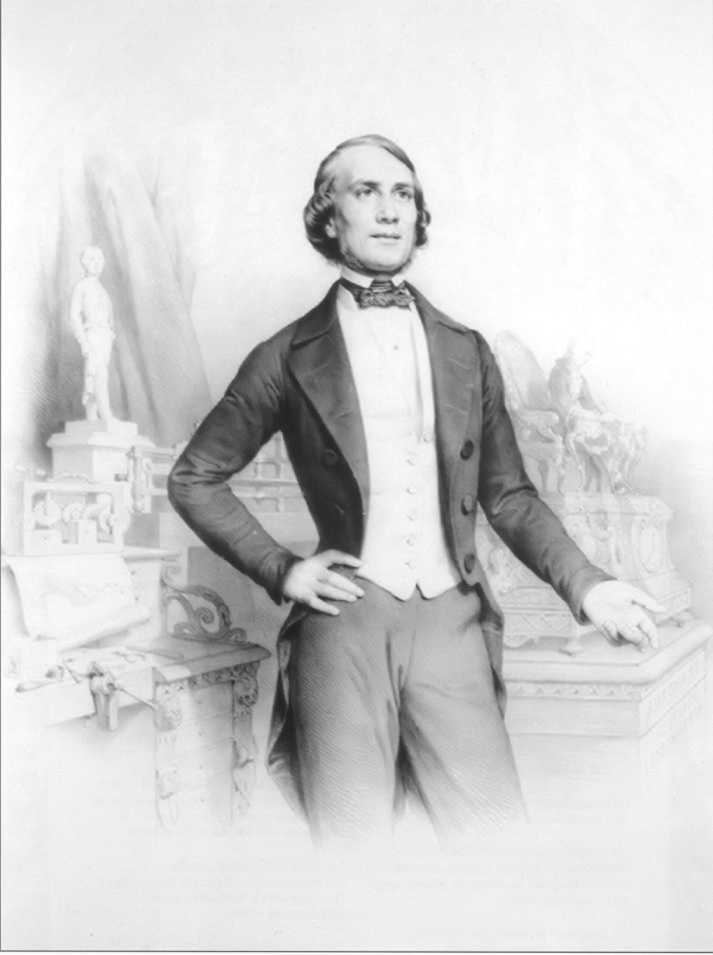
Volumes have been written on the extraordinary life and career of Jean Eugène Robert-Houdin. And justly so – he revolutionized the way theatrical magic is performed in the modern age. So influential was Robert-Houdin to the advancement of the craft that Erich Weiss later modeled his own stage name – HOUDINI – after him.
First, a general note that needs to be addressed. It is incorrect to refer to this seminal figure simply as “Houdin.” His last name is hyphenated, and pronounced “roBEHR-ooDAN.” (French pronunciation dictates a silent H.)
Robert-Houdin was trained as a clockmaker, and used his mechanical expertise to create intricate wind-up automaton devices that could also perform magic. He combined these artistic machines with his own prodigious technical skill, and presented shows that baffled Europe in the nineteenth century.
According to Christian Fechner, author of The Magic of Robert-Houdin – An Artist’s Life, “It’s important to understand what magic was like before Robert-Houdin. Not only that, but you must understand how audiences viewed a magic show before Robert-Houdin. Magic was not considered an art. When people went to a magic show it was to have fun. The magicians often pulled pranks on their neighbors. They were not big mysteries. There was nothing classy about it – popular yes, but it was a low level of entertainment, like performing animals. Robert-Houdin changed all of that and made magic a high form of entertainment. Probably not only because of his repertoire, but also because of his charm and personality on stage, his elegance, his education. He was able to make magic acceptable to France’s high society because he knew them very well from selling them his mechanical clocks and automata. When you entered into the Théâtre Robert-Houdin you did not enter into a theater, but into a living room, and your host was on stage. And he talked to you like a host, and magically offered you food, drinks, and gifts.”
Souvenir fans were distributed to guests so they could cool themselves during the hot summer months. These delicate, decorative fans depicted the theater entrance, as well as vignettes of Robert-Houdin’s most famous tricks including the Orange Tree and the Light & Heavy Chest.
Picture this:
You’re seated in a small theater in Paris, dressed in your finest attire. Instead of visiting the opera or a ballet, you chose to attend Soirées Fantastiques, the hottest ticket in town. Robert-Houdin, the show’s elegant star, has baffled you repeatedly throughout the evening, and it’s time for his big finale.
 A gilded Louis XV style table sits center stage. Atop the table is a dollhouse, decorated to look like a miniature bakery. Inside, the magician explains, is an obedient little “pastry chef” who can bake any type of dessert you wish. Robert-Houdin offers a lady in the front row a pastry menu containing all the classics: brioche, macaron, profiterole, opera cake, crème brûlée, and so on. She chooses clafoutis, a popular black cherry tart.
A gilded Louis XV style table sits center stage. Atop the table is a dollhouse, decorated to look like a miniature bakery. Inside, the magician explains, is an obedient little “pastry chef” who can bake any type of dessert you wish. Robert-Houdin offers a lady in the front row a pastry menu containing all the classics: brioche, macaron, profiterole, opera cake, crème brûlée, and so on. She chooses clafoutis, a popular black cherry tart.
Robert-Houdin turns a mechanical crank on the side of the bakery, and summons the pastry chef to come to the bakery door. To everyone’s delight, a charming automaton figure, about eight inches tall, appears at the front door, dressed in chef whites. He greets the audience, takes the lady’s order, and mechanically returns into the bakery. As soon as the doors close, a light switches on in the left window, and you see two more automaton figures rolling pastry dough and crushing almonds. A few moments later, the front door re-opens, and the pastry chef appears, holding a dessert on a tray. Incredibly, it is a black cherry tart!
Robert-Houdin asks another lady to place her finger ring into a small box, lock the latch, and hold the box in her hands. Instantly the pastry chef reemerges from the bakery holding a warm brioche. The magician tears the bun open to show that her ring has appeared inside! The box is, of course, now completely empty.

David Copperfield performed Robert-Houdin’s “Pastrycook of Palais Royale” for me, during a midnight tour of his museum
Finally, Robert-Houdin asks a gentleman to loan him a 20 franc gold coin. He explains that the pastry chef is such an intelligent businessman that he can provide change for the borrowed coin, in francs and centimes. The patron suggests three 5 franc coins, four 1 franc coins, nine 10 centimes, and two 5 centimes. No matter how difficult the mathematics, the pastry chef returns to his bakery, and emerges with the requested coins on a tray!
What lessons have I learned from Jean Eugène Robert-Houdin?
DRESS THE PART
Psychologist Carl Jung believed that universal, mythic characters called archetypes reside within the collective unconscious of people the world over. To most, the “magician” archetype is symbolized by a bow-tied man, wearing a top hat and tuxedo. But this was not always the case.
Prior to Robert-Houdin, the traditional magician’s costume was an elaborate robe decorated with stars and half moons. These magicians played the part of a wizard, and peppered their performances with mystical mumbo-jumbo. Another costume popular among street performers was an ill-fitting, raggedy suit with bright colors and baggy pockets.
Robert-Houdin is credited as being the first “modern” magician. He eschewed the rough and tumble garb of other conjurers, and instead dressed in normal evening attire. His patrons wore finely tailored tailcoats, vests and bowties, and therefore, so did he. He wasn’t trying to dress like the stereotype of “a magician” — he was simply matching his attire to that of his audience. His demeanor and appearance made them think that he belonged to the same social sphere as well.
Incidentally, the sewing machine had recently been invented, and it became easier for prosperous Europeans to obtain ready-to-wear, high quality clothing. Robert-Houdin lived in the cosmopolitan city of Paris, where he could easily shop in the same department stores as his clients.
Flash forward 150 years. When I began my own performance career in New York, I invested my early earnings in my wardrobe. I began shopping at Barneys and asked the sales clerks to help me pick out some distinctive suits. For several years I wore “off-the-peg” clothing, but later graduated to a custom tailor. But as much as I enjoyed these custom-made suits, they made me look like a well-dressed businessman, not “a magician.”
So I turned back to examine the magician archetype embodied by Robert-Houdin, and decided to alter my course. My new “look” would in fact be quite old, harkening back to nineteenth century European fashion. On a trip to London’s Saville Row I snapped up several morning coats, waistcoats, cravats, and a silk top hat.
The reaction of my audiences changed immediately, for the best. As I walked on stage, I once heard a front-row patron whisper, “This is going to be good. Look at this guy – he even looks like a magician!”
INCLUDE YOUR FAMILY
Robert-Houdin’s wife died at the age of 32, leaving the magician, at age 38, a single father of three. In order to assist in raising the children, he remarried less than a year later to a woman ten years younger who was willing to take over the household.
One son in particular, Emile, took a special interest in his father’s shows. Together they practiced challenging memory stunts, and Robert-Houdin eventually realized that Emile had surpassed him in his ability to remember large volumes of detailed information.
When Emile turned fourteen, Robert-Houdin invited him to perform a two-person act on stage. The act was titled Second Sight, and it took advantage of Emile’s prodigious mental agility. The boy was thoroughly blindfolded, and his father walked through the audience borrowing random personal objects. Mysteriously, Emile could divine each object, despite being completely blindfolded. Their early attempts at this act were met with skepticism. Audiences suspected that they were communicating with a secret verbal code, so Robert-Houdin changed their presentation. Instead of speaking aloud to his blindfolded son, he simply rang a tea service bell. At each ring, Emile announced each object that his father had borrowed: “a pocket watch, a hair pin, a carving knife,” and so on.
The father-son act was a true novelty, and attracted masses of people who wanted to try and decipher how young Emile could know so much. Robert-Houdin’s 200-seat theater was consistently sold-out, and their show became the talk of Paris.
Based on this success, Emile participated in later additions to the show, including the Portfolio, and the Ethereal Suspension. These became signature illusions in Soirées Fantastiques.
I was always taken by how many of these illustrations depicted Robert-Houdin performing with his son. As a father myself, I envisioned how much effort and patience must have been required to train Emile to perform at a professional caliber in front of paying audiences. No parent wants to crush their child’s enthusiasm, nor selfishly steal away a childhood for professional gain. But being on stage in a high-pressure environment could easily create a rift between father and son. Working side by side with a child requires a delicate balance that boosts the child’s confidence while still maintaining the respect required by the parent. Over time, both father and son must form a mutual trust that extends past the footlights to daily life offstage.
When my own children were small, I played memory games with them, similar to those described by Robert-Houdin in his memoirs. “Walk past this shop window, look away, and describe how many items you remember!” Or, “Here are twenty-five objects printed on a grid. I’ll name one item, and you tell me every other object, starting from that spot, in order!” These fun games were meant to develop their observational skills, and sharpen their memory for life, in general. But I had another motive – namely, Robert-Houdin’s Second Sight act.
My daughter, June, was more inclined to practice than my son, and by the age of five, she could perform a unique version that I created. At family gatherings, I handed June a box of Crayola crayons and a pad of paper. “Go sit in the corner, and draw a few pictures. Daddy is going to show the adults some card tricks,” I said.
June retreated to the end of the room, and kept herself busy by coloring on the pad.
After a card trick or two, I said to one of the guests, “Think of any object you like. Something that a small child would know how to draw.” I pointed over to June, still coloring away on her pad. The adult secretly drew a picture on a piece of paper – let’s say a fishbowl with a fish swimming inside – and hid that paper so nobody could see it.
I turned to June and asked her to bring over her last crayon drawing. Miraculously, it was of a fishbowl with a fish swimming inside!
This routine was a big hit for us at family parties, and NY Times reporter N.R. Kleinfield even wrote about it in his feature story about my life:
At preschool, Steve steered June and a dozen classmates to a hallway and did a few tricks. Card stuff, a glass of orange juice emerging from beneath a handkerchief, an orange turning up inside a girl’s hat. Giggles, bug-eyed looks.
June wanted to do her trick. A school worker was drafted to covertly draw something simple a child would recognize. June came up blank once, twice. She was rusty. One more time. The worker drew a heart. June drew a heart.
We have had a lot of fun performing this Second Sight act. One year, my children agreed to perform together with me at the Waldorf Astoria for a Father’s Day edition of Chamber Magic. This performance was their Father’s Day gift to me.
Here are some photos of that special day:
The proportion, angle, and size of her drawing perfectly matched the tree drawn by the random gentleman. The audience reaction was a collective gasp that I’ll always remember with pride. Sharing the stage with my children was the best Father’s Day gift this magician has ever received.
LIGHT & HEAVY CHEST
For my television special Lost Magic Decoded, I decided to recreate one of Robert-Houdin’s most iconic tricks, the Light & Heavy Chest. While he performed this routine in his theater shows in Paris to great acclaim, the routine is legendary for its role in stopping a rebellion in northern Africa. In 1856, the French government summoned Robert-Houdin out of retirement to put down an incipient revolt in the French colony of Algeria, by demonstrating that he could easily achieve total control over the strongest rebelling warriors.
The strongest Marabout warrior was suddenly unable to lift a small, light, wooden chest. It appeared as if Robert-Houdin had stripped away his strength. The magician successfully showed the Marabout rebels that the French “magic” was more powerful than their own, and caused them to retreat in fear.
In my own show, I developed my own method to turn a modern-day strongman from a crushing bodybuilder into a weakling with the strength of a 3-year-old child.
Here’s how it looked:
At a CrossFit gym in Brooklyn, NY, I asked a strong bodybuilder to lift a 225-pound barbell. He lifted it with ease. After returning it to the ground, I tapped the center of his forehead with two fingers. A moment later, he was unable to lift the barbell off of the ground. It simply wouldn’t budge.
I tapped his forehead, and he was suddenly able to lift the weight again.
Next I handed the bodybuilder a hinged wooden box. He opened the lid to confirm it was empty, and held it at eye level by the top handle. I tapped his forehead, and the box began to sink. To him, the empty box seemed to become heavier and heavier, as if filling with liquid metal. The box became so heavy that it sank to the ground. He was no longer able to lift it.
I casually picked up the box to show that it was indeed still empty, and put it aside.
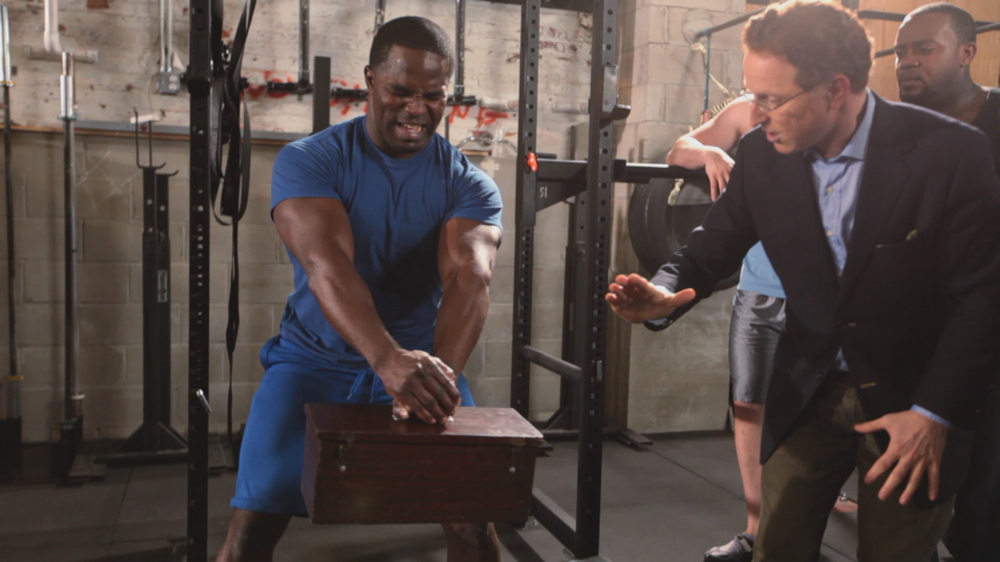
Finally, I asked the bodybuilder if he wanted some water to cool off. I handed him a 16 ounce bottle of Poland Spring. Before he took a drink from the bottle, however, I tapped him on the forehead. He became exasperated when he suddenly couldn’t unscrew the plastic cap! For a guy who could bench press 350 pounds, this was an embarrassing moment, and the other bodybuilders chuckled at his dilemma. I tapped his forehead once more, and the bodybuilder could unscrew the bottle cap at last. He was relieved to take a well-deserved chug of water.
This routine required no stooges or paid actors. While the methodology we devised was entirely different from Robert-Houdin’s original version, the impact on the audience in Brooklyn was just as mesmerizing.
Conclusion
Most people who visit museums glide past lesser-known artifacts, making a bee-line to the most famous pieces of art. How many beautiful paintings in the Louvre have been ignored as visitors hunt for the Mona Lisa? If you have a specific area of interest, however, certain artifacts speak to you – they call your attention from afar. You may see these special objects in a glowing light, visible only to you.
I felt this way when visiting the collection of Robert-Houdin apparatus in David Copperfield’s museum. David kindly let me hold and examine many of the original props created by the master, including the “Inexhaustible Bottle” – a trick that I perform under the title “Think-a-Drink” in my own shows. As I held Robert-Houdin’s bottle, I felt a profound connection to him. It was nothing more than a prop, a physical object. But to me it was an invisible link that connected a mind from the nineteenth century with one from the twenty-first. I smiled as I held that glowing bottle in my hands.
Next week: HARRY LORAYNE
For further study, I recommend the following books and magazines.
- Essential Robert-Houdin, edited by Todd Karr, The Miracle Factory, 2006
- The Magic of Robert-Houdin: “An Artist’s Life,” by Christian Fechner
- Genii Magazine, Volume 65, No. 11, November 2002
- Annals of Conjuring, by Sidney W. Clark, Chapter 9
- Robert-Houdin, A Magician’s Life, DVD, Talia Films, Paris, 2005
